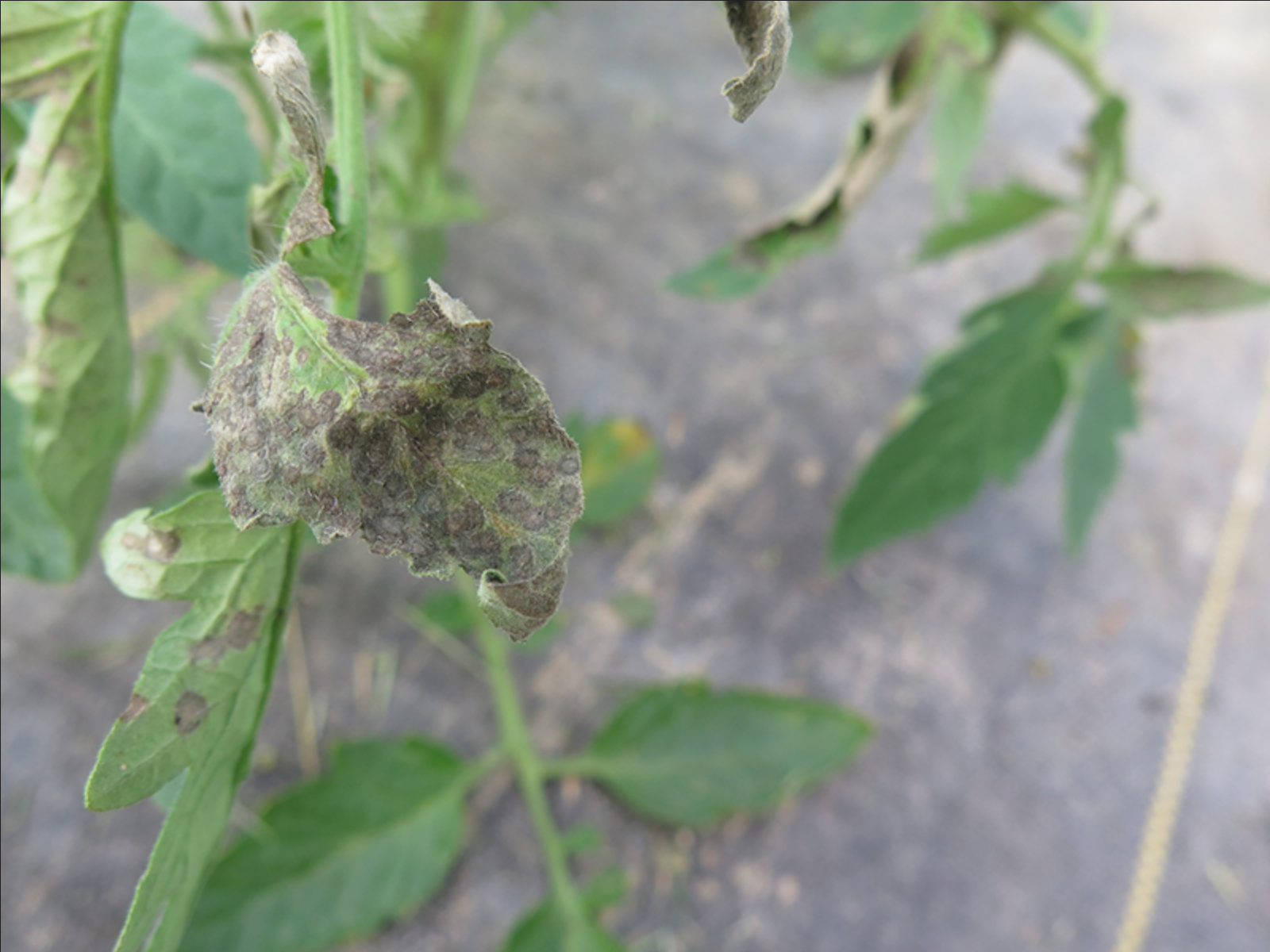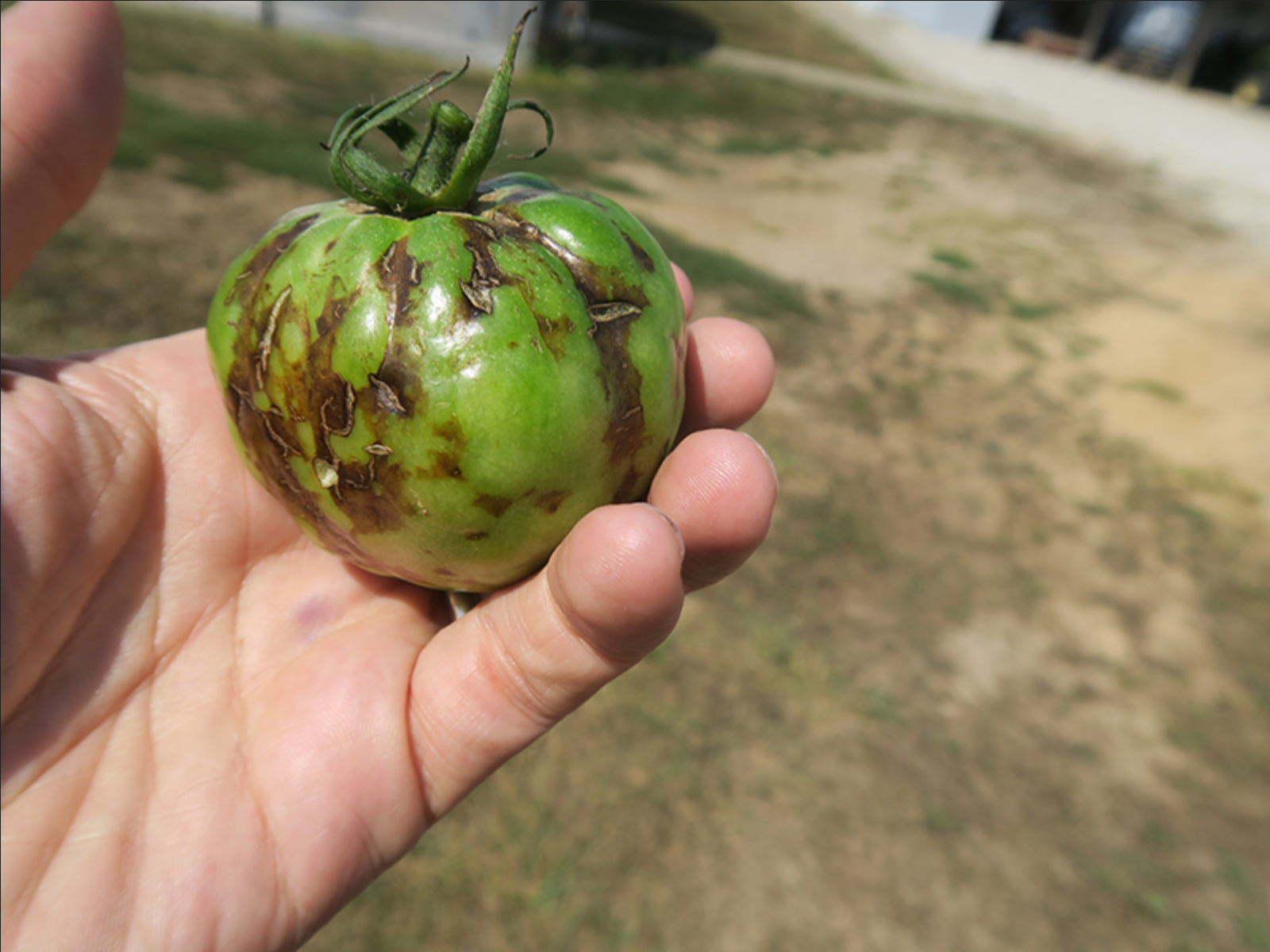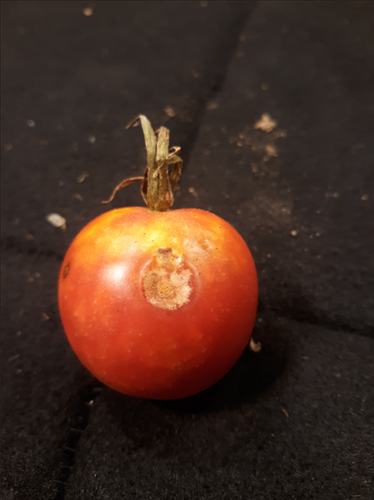Picture of the Week
March 21, 2022
Tomato spotted wilt virus
Dan Egel, Clinical Engagement Associate Professor-SWPAC, Botany and Plant Pathology, Purdue University
It is too early for tomato plants to be growing in the field in Indiana. However, many growers across Indiana will be looking for an early harvest by growing tomatoes in greenhouses. These structures provide a warm environment to speed plant growth. However, some diseases and insects may become more severe in a greenhouse.
Tomato spotted wilt virus (TSWV) often causes stunting and ringspots on tomato foliage (Figure 1). Fruit can become distorted (Figure 2). I usually see TSWV in greenhouses more than in fields. There are two reasons for this observation. TSWV is a virus disease that is transmitted by a very small insect known as thrips. Thrips may be washed off in the rain, but in a greenhouse, thirps may be protected. And usually, the thrips get the virus from ornamental plants such as flowers which may be grown together with tomato plants.
Click images to enlarge
The easiest way to avoid having your tomato plants get TSWV is to grow tomato plants and flowers in separate greenhouses. A more complicated task is to manage thrips. More details about managing thrips and TSWV can be found in the Midwest Production Guide for Commercial Growers. Also see another article on Anthracnose of Tomato by Dan Egel by clicking on the photo on the right,





